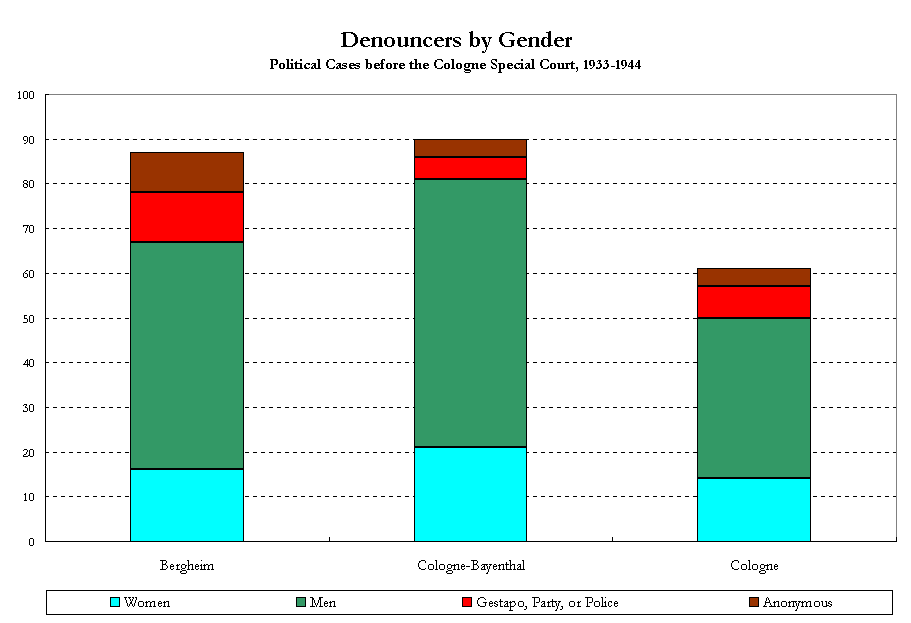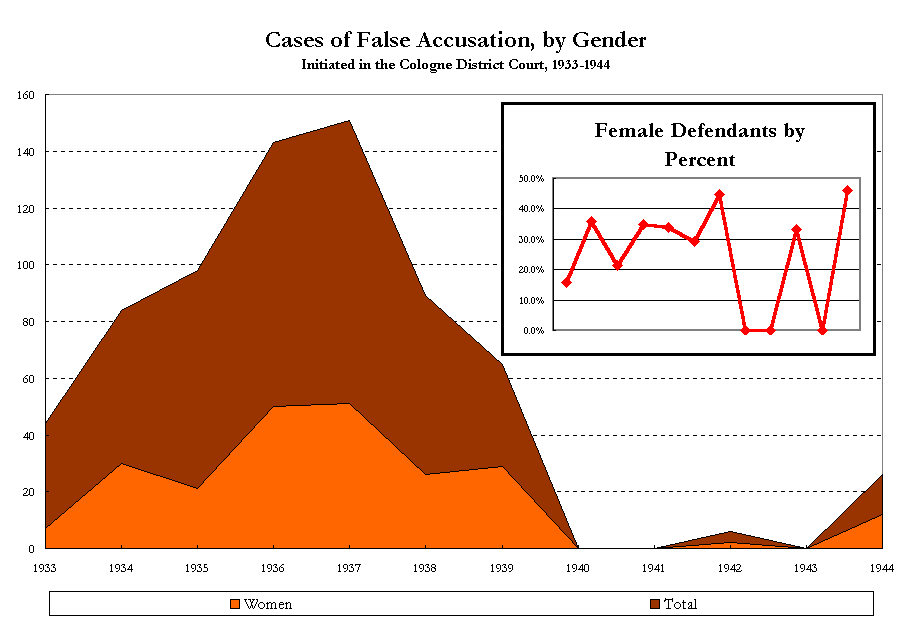
This chart is based on a series of cases of illegal political activity brought before the Special Court (Sondergericht) in Cologne, and classifies the persons responsible for initiating the charge according to gender. The first set consists of cases emanating in Bergheim, a town of about 6,000 located to the west of Cologne; the second set consists of cases that emerged from Bayenthal, a socio-economically mixed quarter of located on the south side the city; the third consists of a random sample of 61 cases drawn from the entire city of Cologne. These data suggest that women were typically responsible for about a quarter of all denunciations. Even if one assumes that a certain percentage of anonymous denouncers were female and that in many cases, men denounced on behalf of their spouses or female kin, this evidence indicates that women "were still far less likely to denounce their fellow citizens" than men (Johnson, 46).

The argument that women were far more active as denouncers than one might conclude from the data on the accusers' gender is suggested by this chart, which reflects the gender of persons accused of false denunciation. Of 706 cases presented before the Cologne District Court between 1933 and 1945, nearly a third were lodged against women (32.8%). Moreover, the percentage of women charged with false accusation rose steadily throughout the period, peaking at about half just before Allied forces took the city and its district. These percentages suggest an "actual" level of female involvement in denunciation that was considerably higher than the data on the gender of accusers (Johnson, 47). But one must be cautious with such data: they reflect as much the priorities of the Gestapo and other police agencies -- notice the virtual cessation of such cases with the onset of war in 1939.

This chart classifies the female accusers in the Bergheim and Cologne-Bayenthal samples according to occupation. It reveals that over 75% of all informers listed their occupation as housewife; not surprisingly, the great majority of female accusers were married (81%). This stands in sharp contrast to the occupations of women accused of political crimes in the same two districts. Among these, only 45% listed their occupation as housewife. These data tend to confirm the argument that Nazism had a "very strong class bias, with the lower classes on the receiving end and the middle classes and the wealthy on the inflicting end of the suffering" (Johnson, p. 67).
Source: Eric A. Johnson, "German Women and Nazi Justice: Their Role in the Process from Denunciation to Death," Historical Social Research / Historische Sozialforschung 20/1 (1995): 33-69.